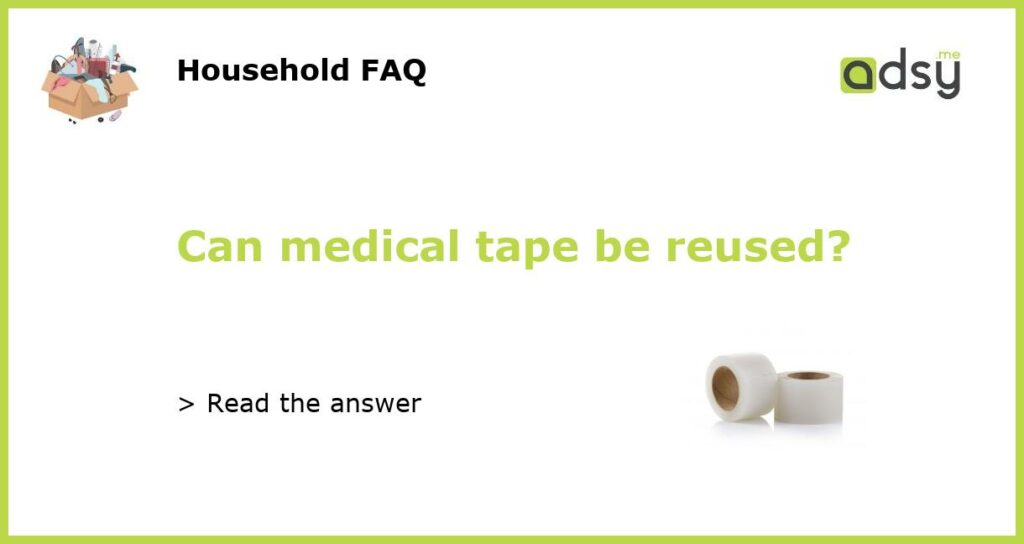Medical tape: the basics
Medical tape is a ubiquitous product in healthcare settings. Used to secure dressings, IV lines, and other medical devices to the skin, it is often an indispensable tool for healthcare professionals. However, with increasing scrutiny on healthcare costs and medical waste, there has been growing interest in whether medical tape can be reused instead of discarded after a single use. So, can medical tape be reused?
The potential risks of reusing medical tape
While it might be tempting to reuse medical tape, there are several risks associated with doing so. First, adhesive properties of tape can degrade after use, potentially leading to inadequate wound closure or device stabilization. Additionally, reusing tape can increase the risk of infection, as contaminated tape can introduce bacteria and other pathogens to the wound site.
Factors to consider
There are several factors to consider when evaluating the safety and efficacy of reused medical tape. These include the specific type of tape, the intended use, the condition of the tape after initial use, and the sterility of the tape. In general, it is not recommended to reuse medical tape due to the risks outlined above.
Alternatives to reusing medical tape
Instead of reusing medical tape, there are other steps that can be taken to reduce healthcare waste and costs. For example, using alternative methods to secure devices (such as tying off IV lines) or using higher-quality tape that is less likely to degrade after use can reduce the need for frequent tape changes. Additionally, purchasing tape in bulk or in larger quantities can reduce costs without compromising patient safety.
Medical tape is an important tool in healthcare settings, but reusing tape is not recommended due to the potential risks of infection and inadequate wound closure. Instead of reusing tape, healthcare professionals can explore alternative methods to reduce waste and costs without compromising patient safety.






